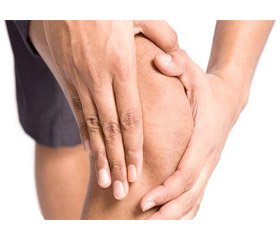Журнал «Актуальная инфектология» 1 (6) 2015
Вернуться к номеру
Reiter’s disease as manifestation of intestinal infections
Авторы: Domashenko O.N., Cherkasova T.I. - M.Gorki Donetsk State Medical University
Рубрики: Инфекционные заболевания
Разделы: Справочник специалиста
Версия для печати
Until present, the Reiter’s disease (Fiessinger-Leroy-Reiter disease) has been seen as a system disease having immune nature, caused by the chlamydial infection. However, the possibility of its occurrence exists to be caused by gram-negative intestinal infection pathogens. Most significant among gram-negative intestinal infection pathogens are Yersinia – yersiniosis and pseudo-tuberculosis pathogens which are responsible for 63% development of reactive arthritis (1). 33 patients within age 16-34 years (19 women and 14 men) suffering from Reiter’s disease were examined. Reiter’s disease was at 15 patients with yersiniosis, 9 – with pseudo-tuberculosis, 3–with Proteus, 2–with salmonellosis, 1–with eschirichiosis, 1–with klebsiellosis, and 2–with clostridial etiology. The diagnosis was detected in the basis of clinical and epidemiological data, bacteriological examination and serological identification. In all cases, the etiology of Reiter’s disease was scored subject to generally accepted methods (bacteriological, serological, EIА, and with immunoblot method for 6 cases of yersiniosis). The patients with eschirichiosis and klebsiellosis, in addition to the positive stool culture, do also have pathogens excreted from urine. 28 patients have Reiter’s disease developed in 3-8 weeks after starting of main disease. 80,6 % patients had gastroenteritis and enterocolitis syndromes as manifested, other patients had the same as mild. The knee joint monoarthritis was found at 1 woman. Recurrent arthralgias were observed at 3 patients; this enabled to find the course of diseases as mild. The patients with yersiniosis and pseudotuberculosis had more frequently the non-symmetric diseases of knee, talocrural, and fetlock joints. More rarely, the shoulder, elbow, and coxofemoral joints were part of it. Among examined patients, 3 complained with the pain in intervertebral junctions. 32, 3 % patients had morning stiffness of joints. Typically, the skin over lesioned joint was not hyperemic, hot by touch; edema was admitted. 61,3 % of patients had tendosynovitis. At 22,6 % (patients with yersiniosis, pseudotuberculosis, and Proteus infection) sacroilitis was admitted. Arthritis lasted from 1 month to 5 years, mostly at patients with yersiniosis. Chronic form that was diagnosed in 6 months from starting of illness was accompanied with long-lasting recurrent course despite treatment which included non-steroid anti-inflammatory medicines. Clinical symptoms of urethritis (cystitis) were observed at 7 (22,6 %) patients; at 19 (61,3 %) changes in urine tests were discovered (both in common test and in Nechiporenko’s test), other patients (16,1 %) had no lesion of urogenital system. 87,1 % of examined patients with Reiter’s disease, starting from the acute period, were observed with conjunctivitis and keratoconjunctivitis. For treatment of Reiter’s disease with enterogenous etiology, long-time (sometimes for several months) continuous prescription of antibiotics (fluorchinolones, tetracyclines, cephalosporins of the IV generation, and imipinems), anti-inflammatory non-steroid medicines, sulfasalazine (salofalk) is important. In individual cases, due to the severity of the process, in Reiter’s disease treatment the glucocorticosteroid medicines were applied, treatment with which often provoked the joint syndrome relapses.

